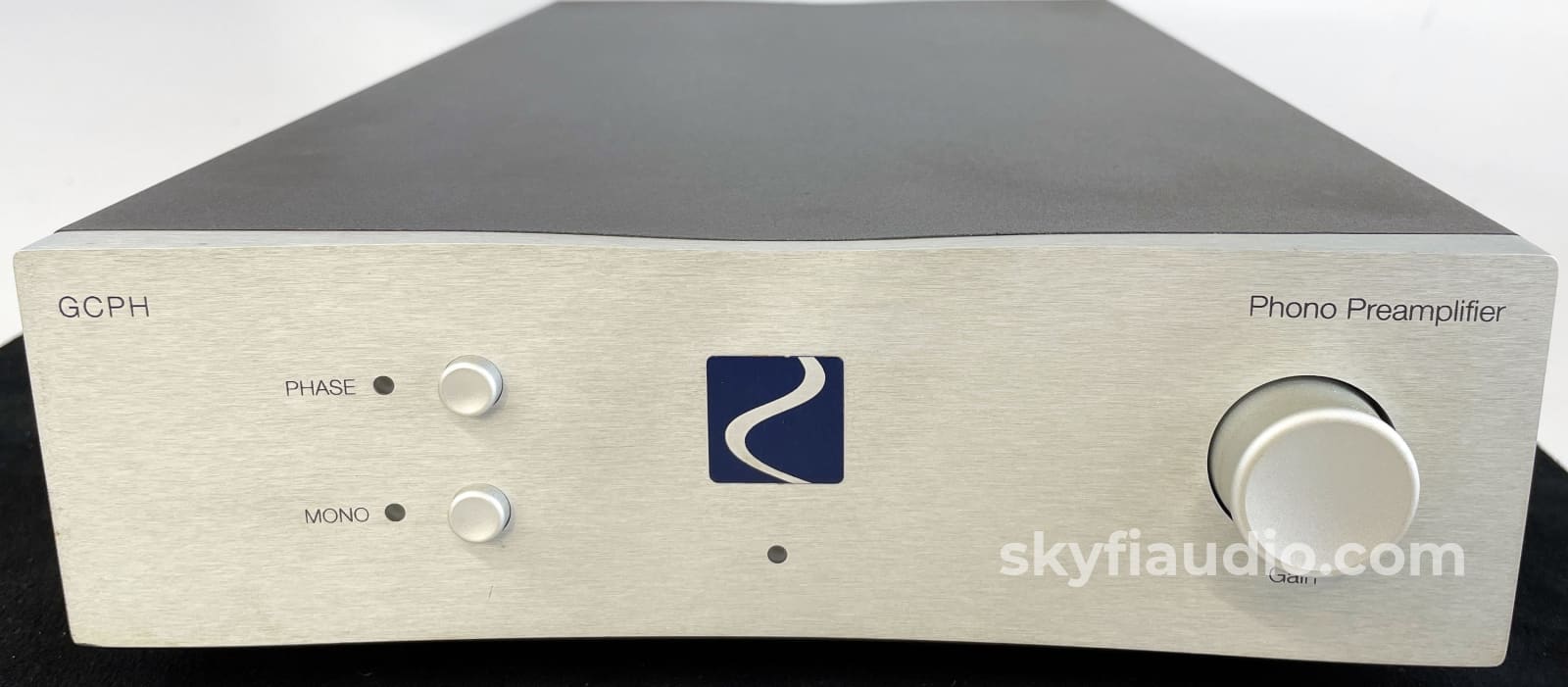
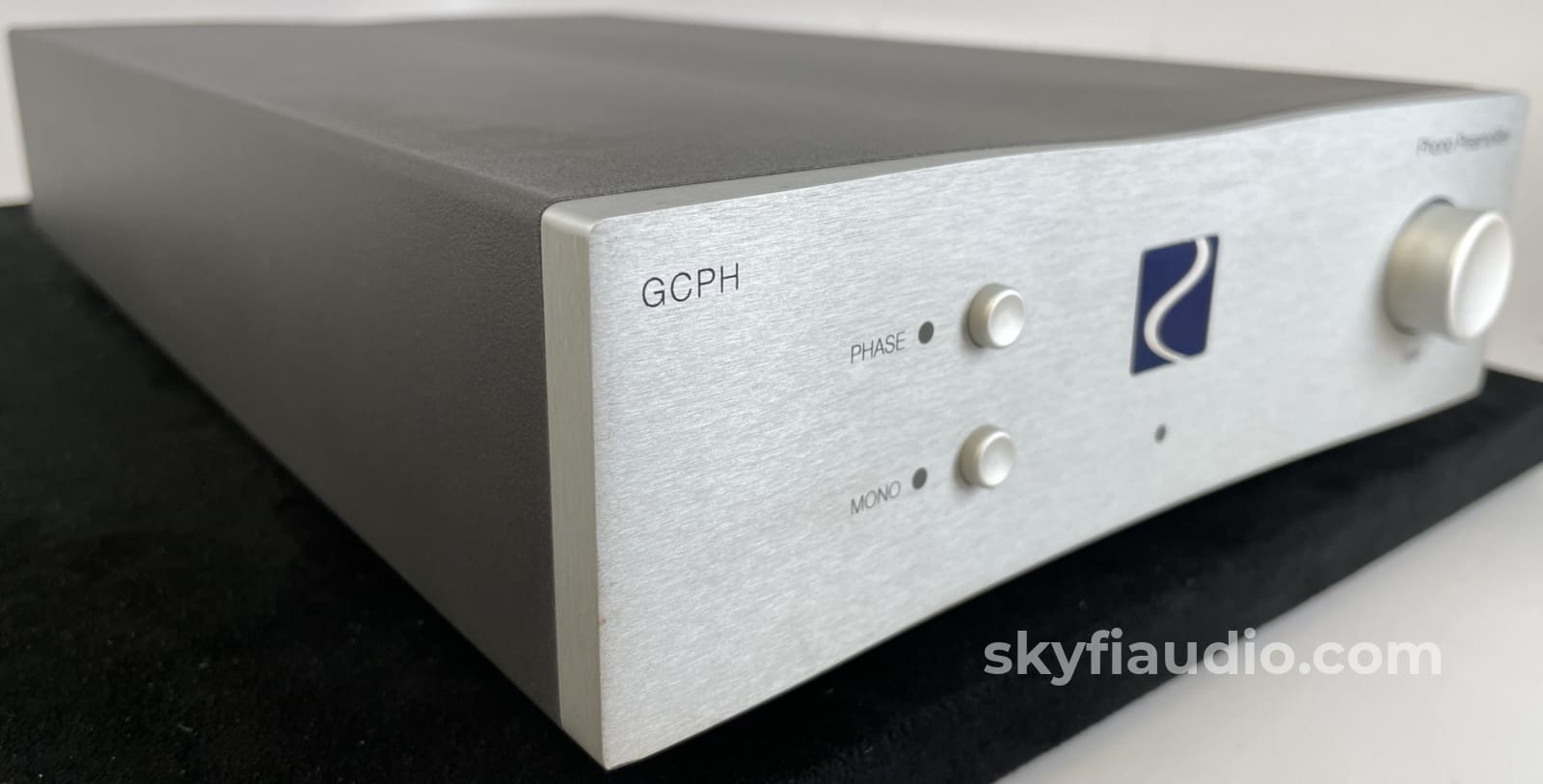
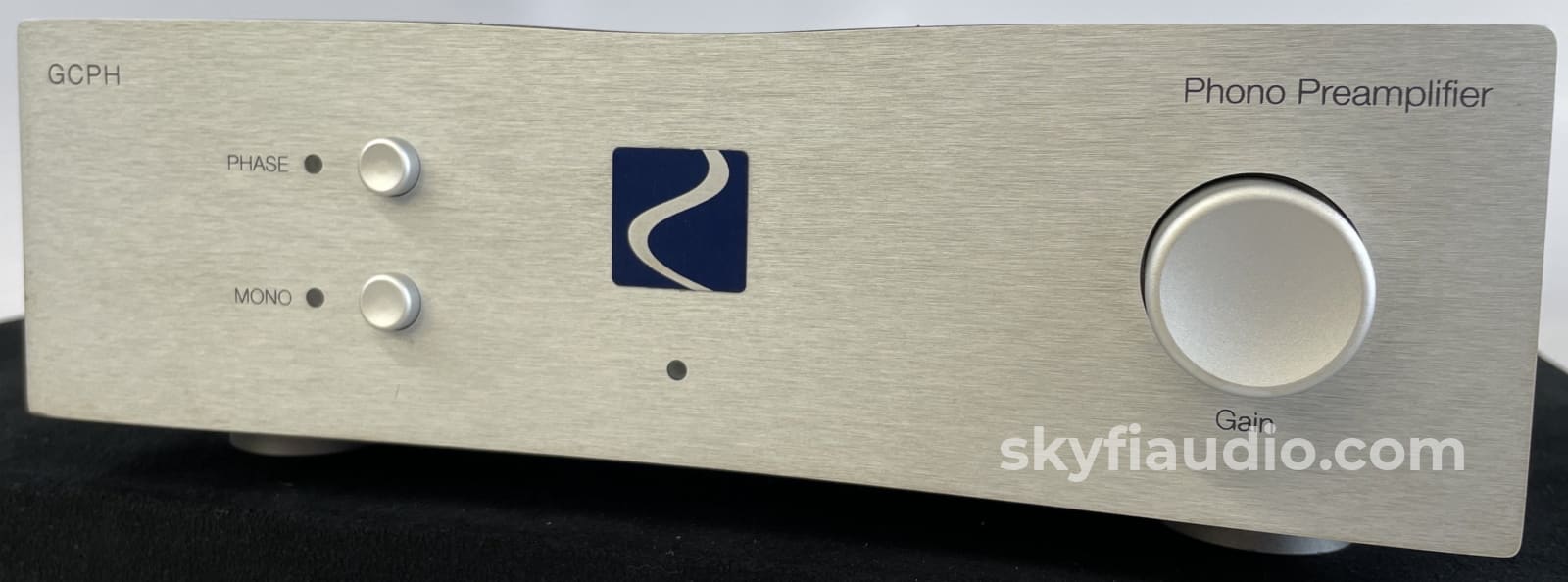
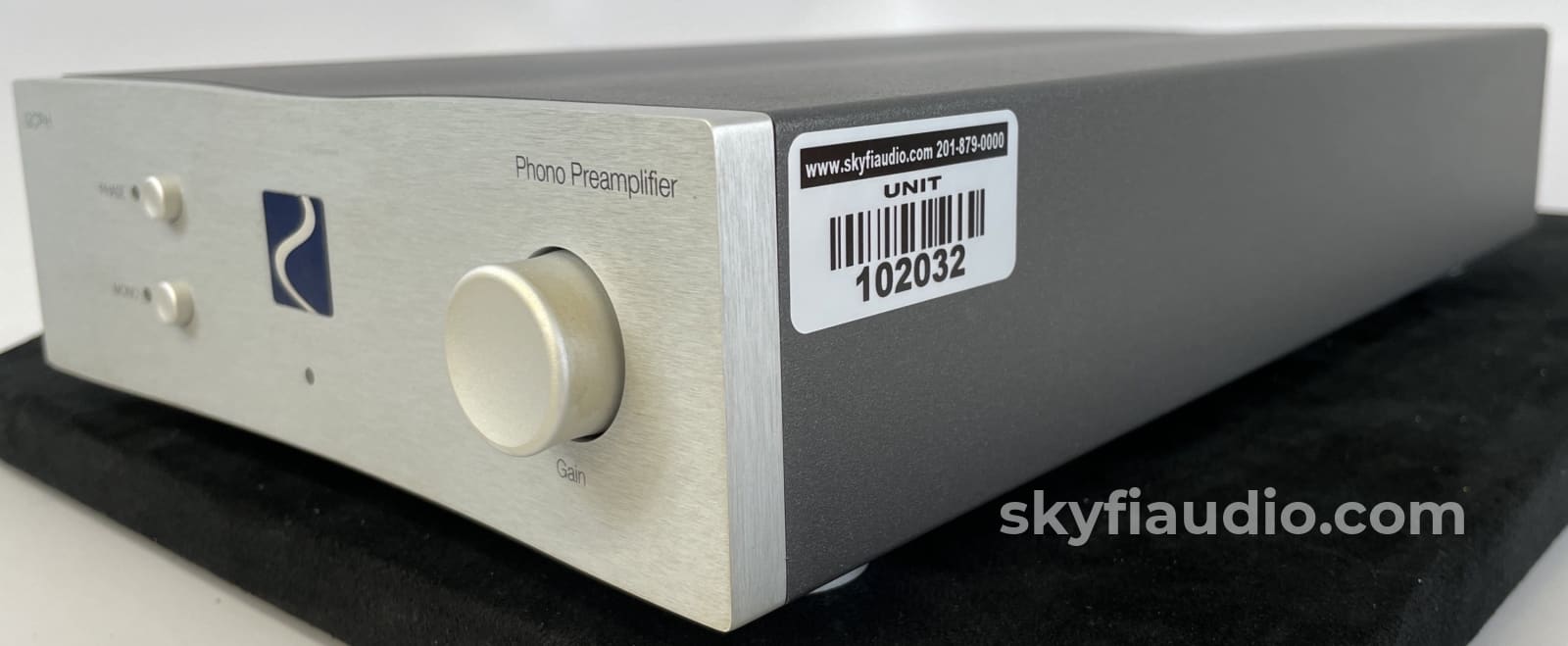

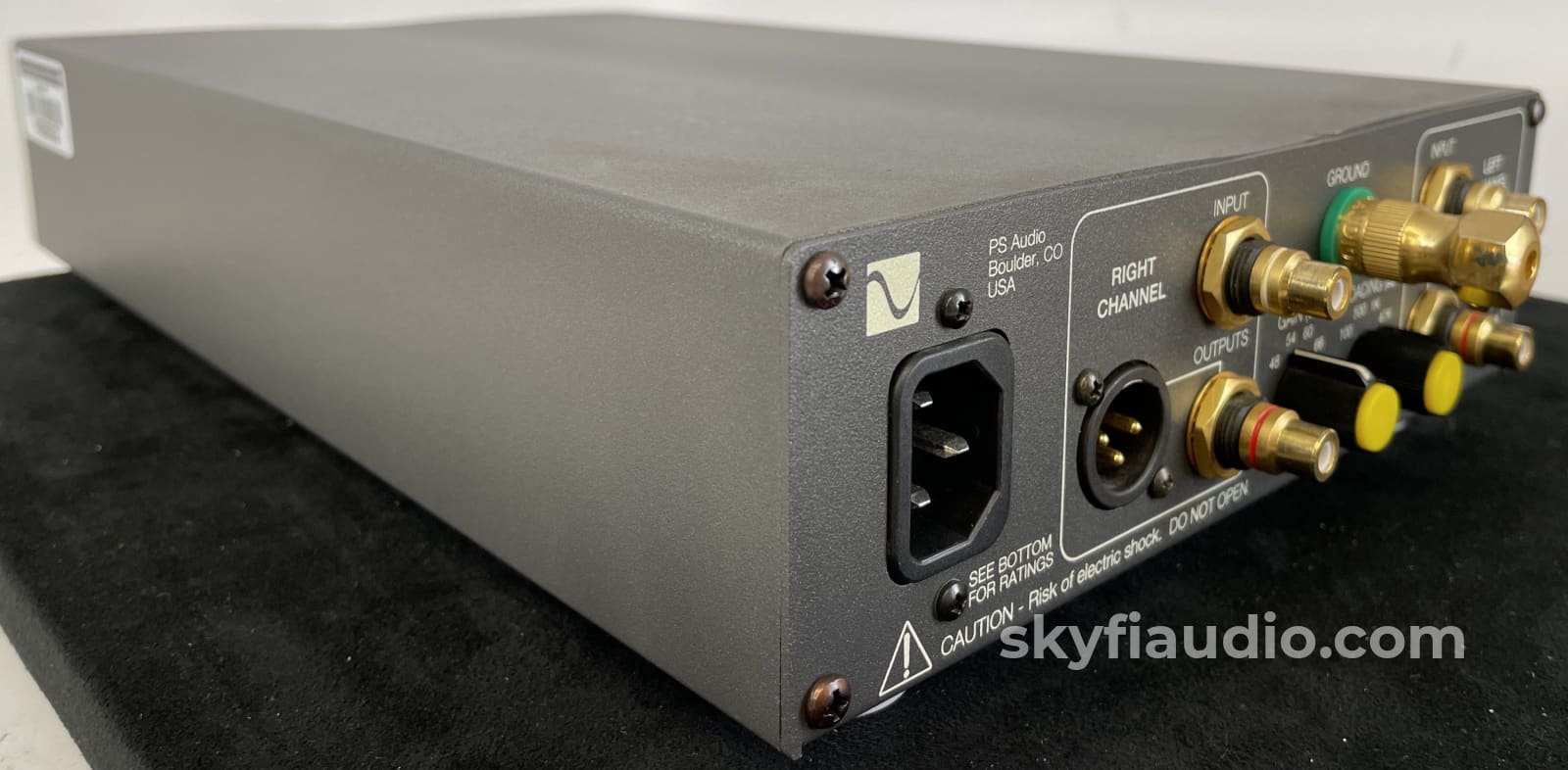
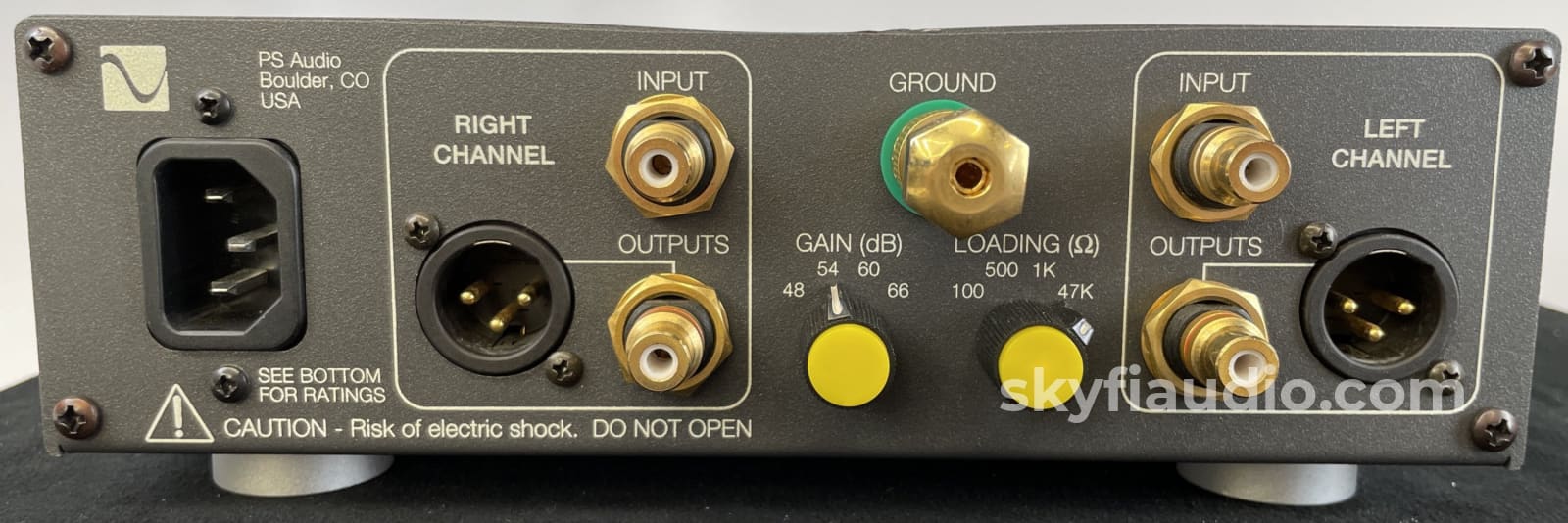
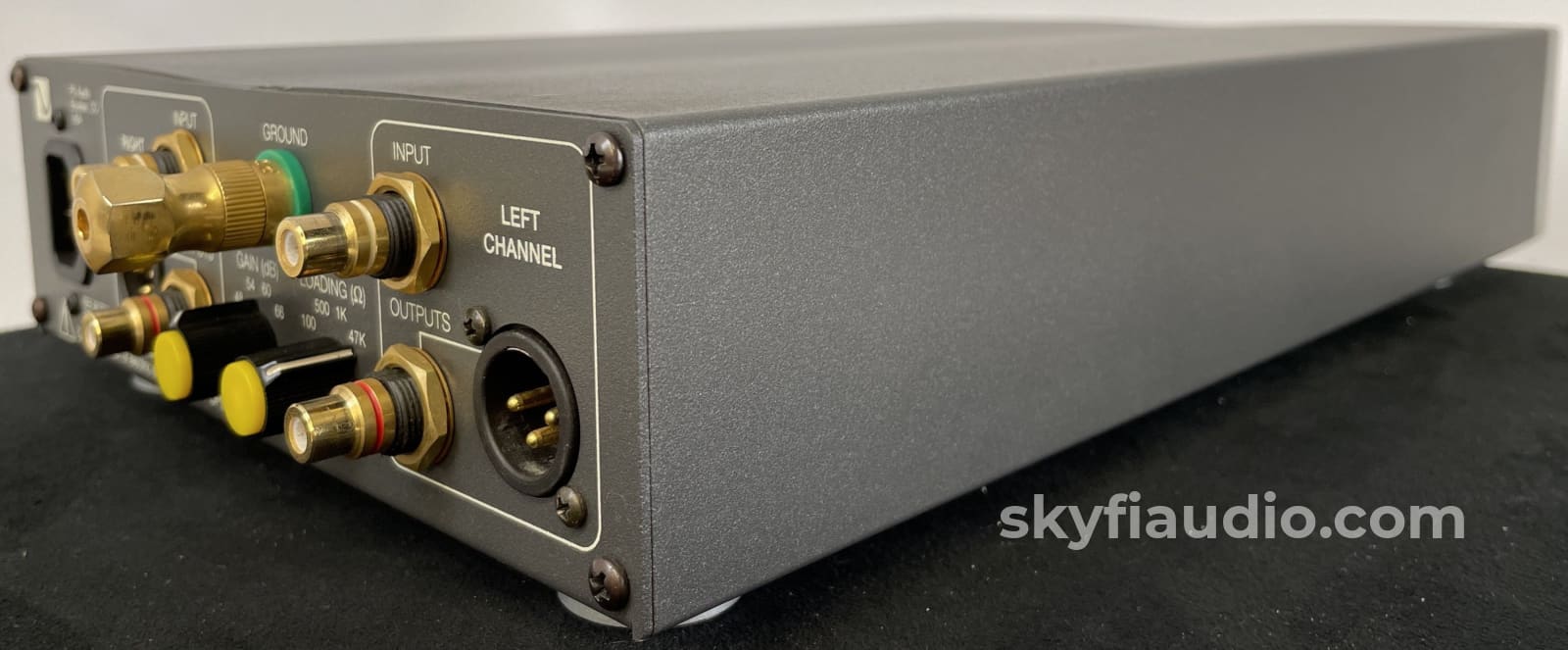

PS Audio - GCPH Phono Preamplifier - With Balanced XLR Outputs
Free Shipping on Most Electronics - Excludes Speakers and Items Requiring Freight - Contiguous U.S. Only
Pickup currently unavailable at SkyFi 479

PS Audio - GCPH Phono Preamplifier - With Balanced XLR Outputs
SkyFi 479
479 South Broad Street
Glen Rock NJ 07452
United States
What will it do?
The GCPH is a high-end standalone phono preamplifier, designed for the highest quality phono reproduction possible. It is based on PS Audio’s unique Gain Cell Technology and over 30 years of designing state-of-the-art phono stages. PS Audio built its first phono stage in 1973 and has been responsible for some of the most loved vinyl amplification electronics the Audio world has ever known.
Passive RIAA Curve
The GCPH is built around the same design philosophy all PS phono preamplifiers have enjoyed over the last 30 years: a passive RIAA curve.
History of the curve
The RIAA curve is a specification for the correct playback of vinyl records, established by the Recording Industry Association of America (RIAA). The purpose of the equalization curve is to permit greater playback times, improve sound quality, and to limit the physical extremes that would otherwise arise from recording analog records without such equalization. The RIAA curve has operated as a de facto global industry standard for the recording and playback of vinyl records since 1954. Prior to that time - mainly between 1940 and 1954 - each record company applied its own equalization; there were over 100 combinations of turnover and rolloff frequencies in use, the main ones being AES, LP, NAB and FFRR. The RIAA standardized the EQ curve for records and hence the majority of vinyl LP’s are recorded to this standard. Before 1940, most records were cut flat. This included broadcast recordings and motion picture recordings before sound-on-film. If you play a pre-WWII 78rpm record through a modern preamp, you will effectively be playing it with a scratch filter whose cutoff begins at 2200Hz, giving lack of high frequencies and muffled voices.
RIAA equalization is a form of pre-emphasis on recording, and de-emphasis on playback. A record is cut with the low frequencies reduced and the high frequencies boosted, and on playback the opposite occurs. The result is a flat frequency response, but with noise such as hiss and clicks arising from the vinyl surface attenuated. The other main benefit of the system is that low frequencies, which would otherwise cause the record cutter to make large excursions when cutting a groove, are reduced so grooves are smaller and more can be fitted in a given surface area, yielding longer playback times (hence the term “LP” or Long Play records). RIAA equalization is not a simple low-pass filter. It carefully defines roll-off points in three places, 2122 Hz, 500 Hz and 50 Hz. There are multiple means of achieving this curve in a phono preamplifier, but the two main implementations are active and passive. Active means the RIAA curve is in the feedback loop of the preamplifier and passive means it is outside any feedback loop. PS Audio has always believed the best performance will be achieved when the curve is outside the feedback loop of the internal amplifier because the amplifiers’ performance will change with frequency. This is because at high frequencies the negative feedback of the phono preamplifier will be very high and at low frequencies, relatively low. Our design philosophy of preamplification has always revolved around the notion of keeping negative feedback low and uniform at all frequencies. Thus, a passive RIAA curve is “just what the doctor ordered".
Accuracy is critical
Whatever method is employed, it is absolutely critical the curve be as exact as possible. Deviations of more than a tenth of a dB are unacceptable. The GCPH is flat to the RIAA standard by less than 0.1dB.
A unique feature of the GCPH is the multiple gain setting adjustment methods. The coarse gain settings are available on the rear of the unit, the fine gain setting available via a volume control like knob on the front panel. The front panel gain adjustment also allows the GCPH to be used as a standalone phono preamplifier, feeding the purest phono signal possible directly into your power amplifier.
Enjoy!
You should expect unrivaled sonic qualities, with low noise, high performance audio being delivered to your system through this unique and ground breaking phono preamplifier.
PS Audio - GCPH Phono Preamp - Manual
Please click here for detailed specifics regarding our specialized packing process that separates us from the rest.
|
Item |
Included |
|
Original Box |
No |
|
Manual |
Online |
|
Remote |
N/A |
|
Cables |
Yes - Power |
|
Physical Condition |
8 |
|
Working Condition |
10 |
Choose options
